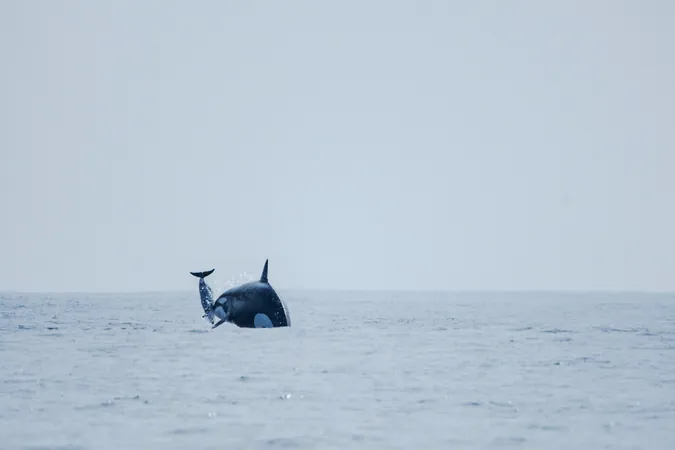
Unveiling Secrets: Mysterious Orcas in Chile Exhibit Remarkable New Hunting Skills
2024-09-26
Author: Ting
Unveiling Secrets: Mysterious Orcas in Chile Exhibit Remarkable New Hunting Skills
In the pristine waters of the Humboldt Current system off the coast of Chile lives a secretive population of orcas that scientists are keen to learn more about. Thanks to advancements in citizen science and persistent research efforts, Dr. Ana García Cegarra from the Universidad de Antofagasta is leading a project that is gradually peeling back the layers of mystery surrounding these remarkable marine mammals.
Previously, García Cegarra’s team observed these orcas using fishing boats to their advantage in capturing sea lions. Recently, they made a stunning observation: for the first time, orcas were seen successfully hunting dusky dolphins and sharing their catch among pod members. This significant finding not only sheds light on their dietary habits but also holds the potential to deepen our understanding of orca populations throughout the southern hemisphere, which could enhance conservation efforts.
The Challenge of Studying Orcas
García Cegarra emphasized the difficulties inherent in studying orcas in their natural habitat, noting, “Understanding their role in the marine environment is crucial for the conservation of this poorly-known species in the Humboldt Current.” As apex predators, these orcas travel vast distances and live offshore, complicating any attempts at observation.
Each orca ecotype displays distinct hunting preferences and acoustics, which are influenced by available prey and environmental conditions. In the southern hemisphere alone, five different ecotypes have been identified. For example, while Type A and Type B1 orcas primarily hunt marine mammals, others lean towards a fish-based diet. Identifying which ecotype the Humboldt Current orcas belong to is pivotal for understanding their ecological role.
How They Track Orcas
The research team utilized a combination of personal surveys and crowdsourced data from whale-watching excursions and fishing boats to keep track of the orca population and their hunting practices. Observers documented the presence of orcas, their group dynamics, and specific locations, capturing photographic evidence that could be cross-verified with existing catalogs of known individuals.
Utilizing systematic surveys and drone footage, the researchers managed to map orca sightings in the area, noting the behavior and prey choices of different pod groups. This innovative approach enabled them to confirm that the Menacho pod had successfully caught dusky dolphins—something previously unrecorded in this region.
Sharing the Feast
Not only did the researchers witness the hunting of dusky dolphins, but they also observed the unprecedented act of food sharing among the members of the Menacho pod. Food sharing is a behavior noted in various orca populations, often occurring to support kin or enhance cooperative hunting dynamics. The researchers suggest that in this instance, the Menacho pod were likely sharing their catch among close relatives, akin to the food-sharing practices of Type A orcas that hunt larger prey.
García Cegarra noted that more comprehensive studies are essential to fully grasp and safeguard this enigmatic population of orcas, adding, “Genetic information is crucial; however, obtaining that data is challenging due to their elusive nature.”
What Lies Ahead for Orca Research?
Researchers are eager to explore the genetic connections and behaviors of this intriguing group of orcas, as their findings have implications not just for local conservation efforts, but also for understanding orca populations around the globe. With further study, it is hoped that the veil of mystery can be lifted, allowing for better protection of these extraordinary marine animals in the waters off Chile.
As scientists continue to uncover the secrets of the Menacho pod and their hunting prowess, the journey to appreciate the complexity of orca life goes on—one exciting discovery at a time.

 Brasil (PT)
Brasil (PT)
 Canada (EN)
Canada (EN)
 Chile (ES)
Chile (ES)
 España (ES)
España (ES)
 France (FR)
France (FR)
 Hong Kong (EN)
Hong Kong (EN)
 Italia (IT)
Italia (IT)
 日本 (JA)
日本 (JA)
 Magyarország (HU)
Magyarország (HU)
 Norge (NO)
Norge (NO)
 Polska (PL)
Polska (PL)
 Schweiz (DE)
Schweiz (DE)
 Singapore (EN)
Singapore (EN)
 Sverige (SV)
Sverige (SV)
 Suomi (FI)
Suomi (FI)
 Türkiye (TR)
Türkiye (TR)